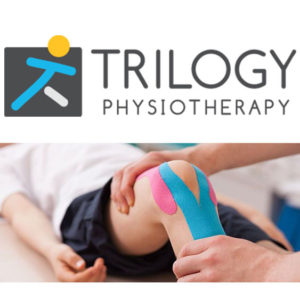To Stretch or Not to Stretch! And how much?
Posted onTo Stretch or Not to Stretch! And how much?
Written by Jim Marinow a Registered Massage Therapist, Fascial Stretch Therapist and Tui Na Practitioner at Trilogy Physiotherapy.
Well….. that all depends. Flexibility is important when it comes to healthy joint function as we take our body through various planes of movement (after long periods of sitting) Taking the time to stretch is great, but making the most of how you stretch is even better.
The stretch before an activity is best done as a dynamic (or moving) stretch. This means, taking whatever muscle groups you will be using, through movements similar to your intended activity.
As an example, if your activity is running your warm-up might include: standing on one leg and touching the floor, followed by gentle walking lunges.
The first part (standing on one leg and doing floor touches) helps to initiate the weight transfer that happens during running and ‘wakes up’ the ankle, knee and hip. The second part (walking lunges) help to activate the Quads, Glutes and Hamstrings, get some blood moving to those muscles. Add in a couple more moving stretches and you have sent the message to your muscles and joints that say ‘Hey its time to work!’
The type of stretch after an activity that is most useful is a static stretch. This is the stretch that you hold for a longer period of time and relax into. As an example: a seated hamstring stretch, where you reach for your toes and hold can be a part of a great injury prevention strategy.
Aggressive static stretching causes muscles to get protective about being forced into a stretch and create unwanted tightness. Listen to your body, take your stretch to the very first “barrier” (this is where you feel a gentle pull?) and breathe. Hold until you either no longer feel the stretch or feel less stretch. This may take up to 2 minutes.
My rules for stretching
- Pre-game: Dynamic (moving)
- Postgame: Static (holding)
- Less is more, keep it gentle,
- Find the first barrier of stretch and hold
- Hold until you feel a ‘relax’
Learn more about our coaching and physiotherapy team and services, or contact us to schedule an appointment.

